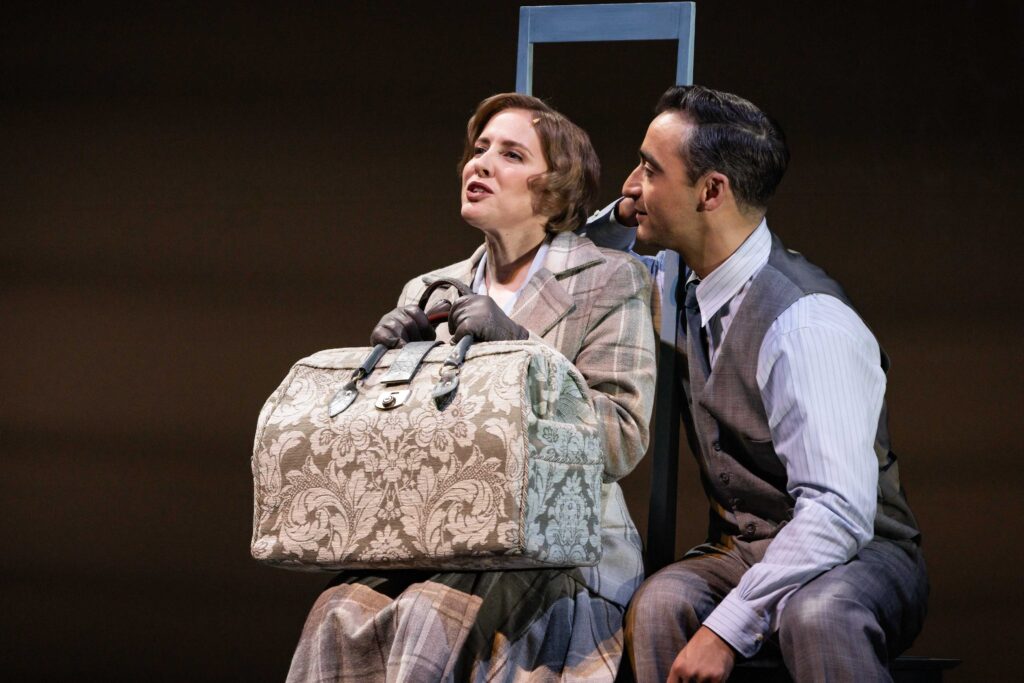Canberra Theatre Centre | Review by Ekaterina Maric
Historical Fourth-Wall-Breaking Analysis of Wealth and Monarchy

16 July 2025
The pressures of the extravagantly rich and the struggles of the working class clash as a humble nanny takes care of the daughters of the seemingly carefree Queen Mother. The wealth and class divide experienced by these two women seems uncrossable, and The Queen’s Nanny asks if they will ever understand each other’s unique motivations.
The Queen’s Nanny by Melanie Tait explores the story of Marion Crawford (Briallen Clarke), or ‘Crawfie’ as she was affectionately called by her dear ‘Lilibet’— the then future Queen of England. Marion’s journey from a hopeful young woman to a desperate older lady is artfully documented, as is her strained relationship with the Queen Mother (Sharon Millerchip). Jointly narrated by Marion herself and a modern-day narrator, the show offers an inherently meta and self-aware analysis of the changing world from 1931 to 2025. In an era when support for monarchical structures has been steadily falling, the modern audience has a very different and perhaps less romanticised view of royalty than the average person in 1931. Simultaneously, the show being written and narrated by an Australian represents our own common views of monarchy, based on this country’s history, making this production particularly poignant.
Leading the show as Marion, Clarke expertly weaves in and out of a Scottish accent into a more ‘proper’ English one as she shows her character’s conflicting identities and class pressures. Her initial softening around Lilibet as she drops to her level makes her completely convincing as a gentle nanny who sacrificed almost everything for that little girl. As the Queen Mother, Sharon Millerchip beautifully traces the decline of her character from nearly carefree, to carrying the weight of a nation. Her simple but effective change in posture over the show allows the audience to feel the tension seeping off the stage. The contrast between the social motivations of the leading women creates a thought-provoking atmosphere throughout.
Matthew Backer as the Narrator and ensemble of other characters managed to express what felt like the entire range of human emotion in 90 minutes. His portrayals of each character were incredibly well defined, particularly Lilibet. From his first shy glance at Marion to his horse play-acting, I was utterly convinced that he was in fact a five-year-old girl and not an adult man.
The show utilises a very simple set, with elements that nod to a child’s playroom. The key locations are represented by quaint, dollhouse-like miniatures that light up, evoking a childlike sense of wonder and making Lilibet’s initial innocence all the more touching and significant. Director Priscilla Jackman’s expertise shines in the cohesiveness of these childish dollhouses and the serious, oftentimes depressing themes.
While I went into this show with the impression that I would be watching a pure comedy, I left feeling deeply saddened by the complexities of Marion’s tale. The nuanced production elements and performances brought both the opulent playrooms of English palaces and the harsh cottages of the rest of Marion’s life to our theatre in an artful way. The Queen’s Nanny highlights the struggles between the working class and ‘out of touch’, impossibly privileged royals in a way that feels unexpectedly relevant to a modern Australian audience.

Ekatarina Maric is a passionate writer and theatre goer, aiming to experience all the Canberra theatre scene has to offer. Before graduating, she participated in her high school’s performing arts program as much as possible, including putting on shows that she had written whilst also performing in the cast. Post graduation, she hopes to continue participating in programs such as Canberra Youth Theatre’s Young Critics, and expand her experience in all areas of theatre. She especially loves shows put on and performed by young people, and adores musical theatre.
